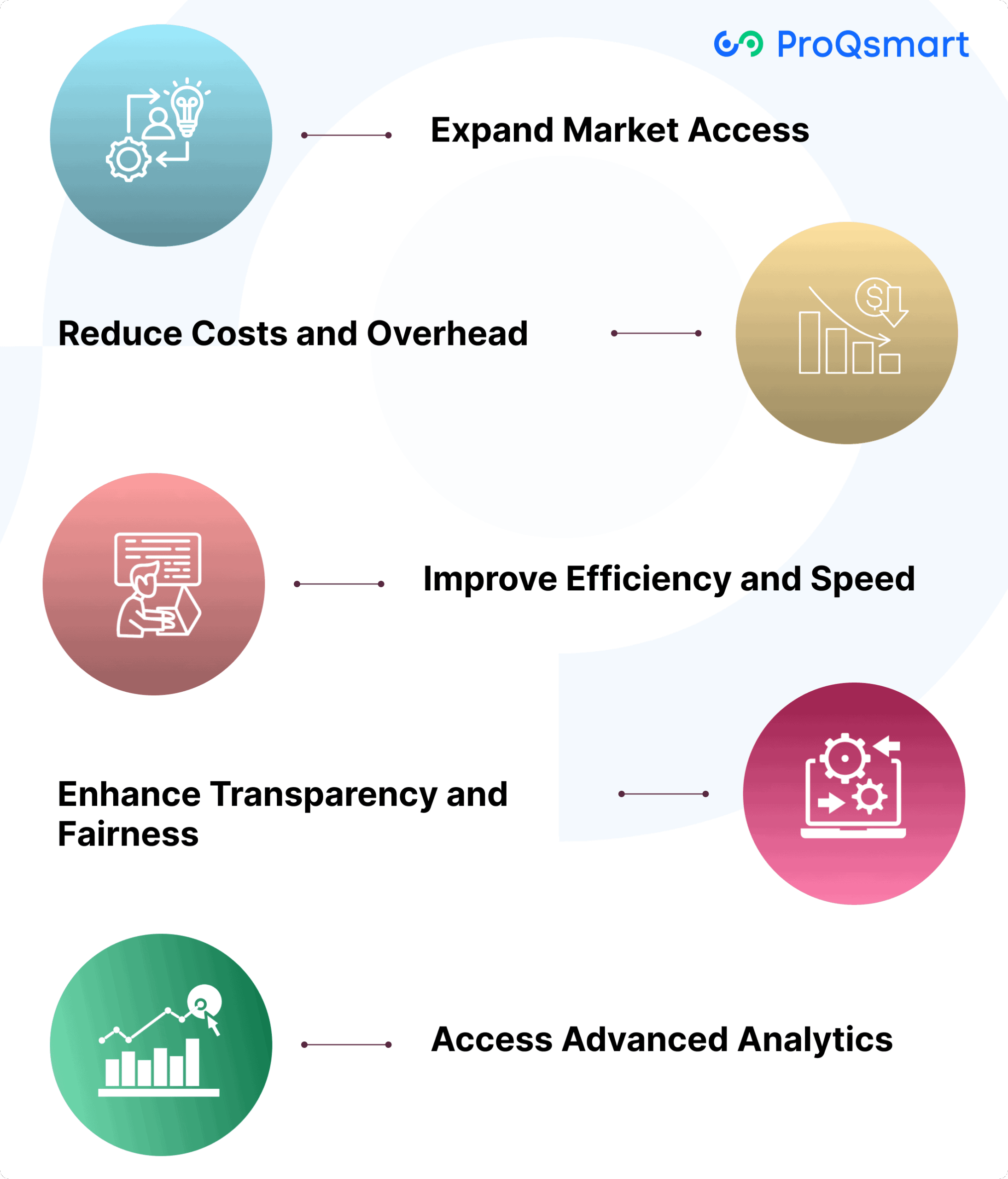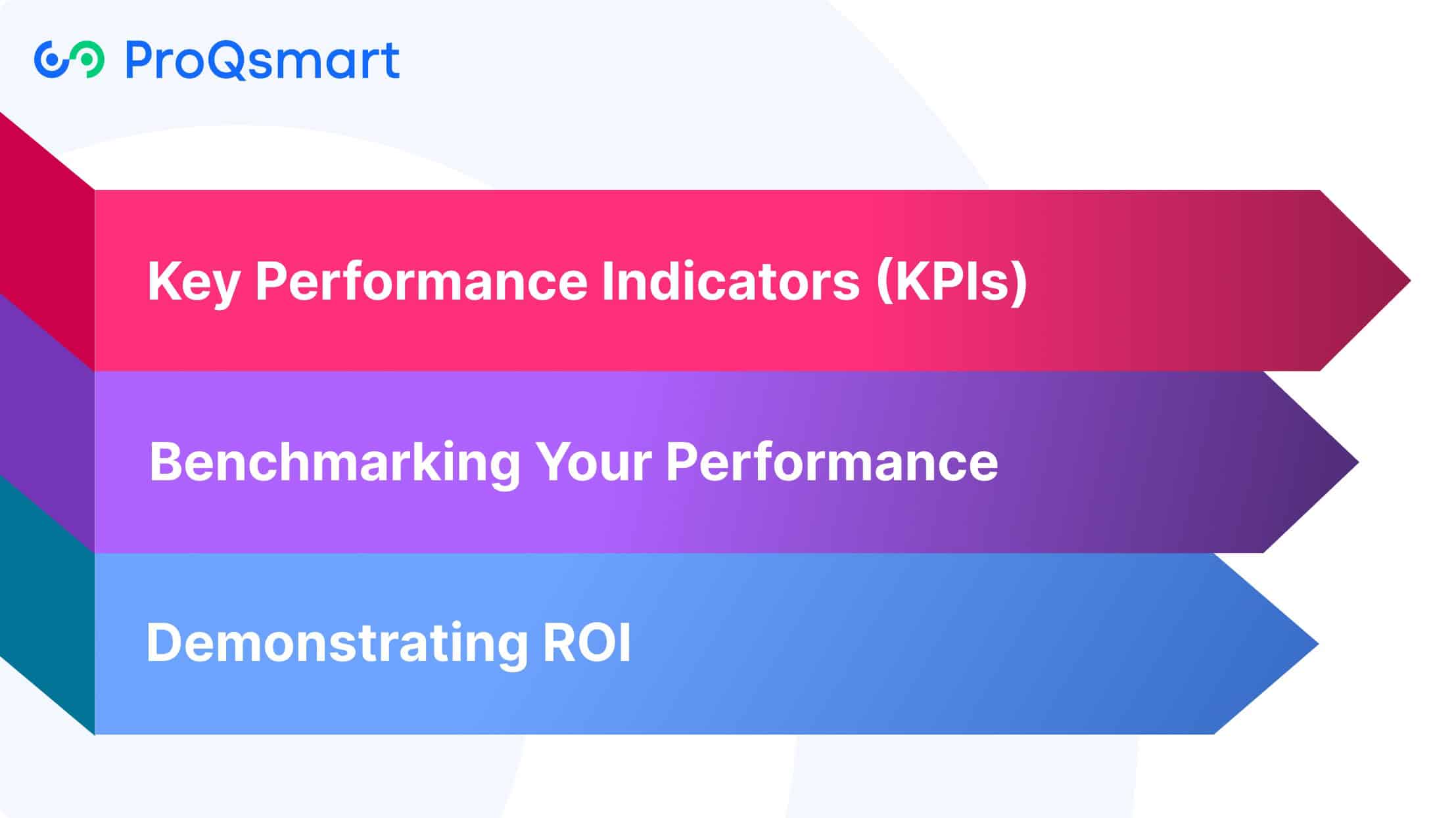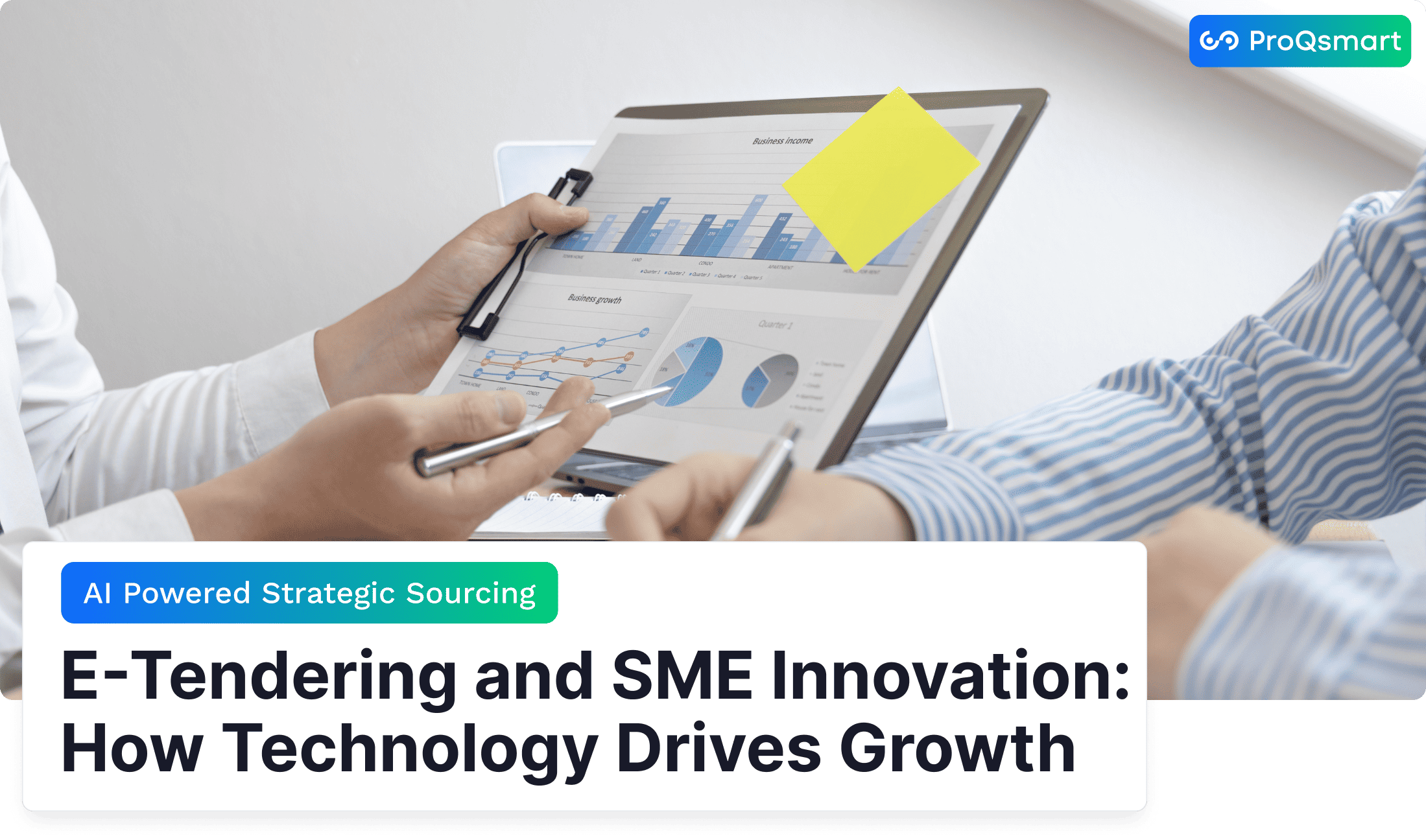E-tendering is the digital tendering process involved in managing tenders, allowing organizations to conduct procurement activities more efficiently using online systems. It streamlines the tendering process by circulating requests for proposals (RFPs) and reviewing bids. This process expedites awarding the contract while still maintaining transparency and efficiency.
By cutting down on paperwork and workflow automation, e-tendering allows procurement teams to streamline processes and save time while reducing mistakes. It increases the competition by improving accessibility and reaching suppliers of all sizes and geographies, leading to more competitive bids.
For businesses adopting e-tendering aligns with regulatory standards and supports sustainability goals by significantly reducing resource consumption. This guide takes a look at how e-tendering processes work. It showcases its advantages and provides actionable tactics to implement it successfully within your e-procurement system.
Why E-Tendering Matters for SMEs
E-tendering is essential to unlocking the potential of small and medium-sized enterprises (SMEs). It increases their chances of success in the procurement process. For SMEs, digitizing the tendering process means big opportunities.
As a result, they’re able to pursue opportunities that have previously been too expensive, complicated, or constrained by their connections. By streamlining the procurement landscape, e-tendering helps SMEs compete on a more level playing field, cutting down administrative burdens and encouraging transparency.
Challenges SMEs Face in Traditional Procurement
SMEs face steep barriers under traditional procurement. Excessive costs of preparing a bid, along with bureaucratic red tape act as major deterrents to participation for smaller businesses. One of the biggest challenges for SMEs is accessing tender opportunities.
Notably established players with strong relationships largely prevail on government and large enterprise contracts. The burdens of the paper-based manual processes, including shipping documents and lag time between communication, add to the challenges. These factors can be daunting and a disadvantage to SMEs, preventing them from competing and growing.
E-Tendering as a Solution
E-tendering addresses this problem by breaking down these conventional barriers using online platforms. This is an area where SMEs can make great strides with help from e-tendering.
Innovative platforms like ProQsmart provide powerful features including real-time analytics, automated workflows, and supplier performance monitoring to ensure their success. This ease of access streamlines the process and opens up SMEs to a larger network of potential buyers and suppliers.
As a result, they’re able to obtain more competitive pricing and access broader opportunities. By cutting down on administrative measures, the new, streamlined processes free up SMEs to dedicate more time and resources to growth while still maintaining compliance and transparency.
How Can E-Tendering Benefit SMEs?

E-tendering has proven to be a game-changing tool for small and medium enterprises (SMEs) looking to compete in the fast-paced world of procurement. By transitioning to online procurement platforms, SMEs gain access to tools that simplify bidding, improve operational efficiency, and foster sustainable growth. Here, we take a deeper look at how electronic tendering can benefit SMEs.
1. Expand Market Access
E-tendering increases access to opportunities by exposing SMEs to a wider range of potential buyers and suppliers. Online platforms ensure visibility for smaller businesses, helping them compete for contracts previously dominated by larger players.
Platforms like ProQsmart do not look simply at matchmaking, but provide daily aggregations of new open tenders released, including proprietary contracts. Increased access and interoperability nurtures SMEs’ capacity to diversify their clientele and win important contracts even as SMEs face significant barriers to entry.
2. Reduce Costs and Overhead
By giving the tendering process a digital upgrade, e-tendering helps eliminate millions in administrative costs. Moving to an entirely digital process eliminates printing and mailing costs and greatly simplifies and accelerates financial benefits.
Platforms such as ProQsmart optimize processes and reduce the distractions of repetitive tasks such as invoice processing. This liberates time to focus efforts on how to grow.
3. Improve Efficiency and Speed
E-tendering protects procurement integrity and reduces procurement cycles by automating submission, review and evaluation. ProQsmart’s AI-powered tools streamline the tendering process by minimizing manual errors and providing real-time tracking, so businesses can make decisions faster.
With e-tendering, SMEs can more easily juggle several tenders at once without sacrificing the quality of their submissions.
4. Enhance Transparency and Fairness
Dedicated digital procurement platforms provide a one-stop, highly secure location for all stored bids and easily generated sourcing data, enhancing the electronic tendering process. Integrating regulatory compliance, ProQsmart fosters trust and minimizes corruption among procurement professionals.
5. Access Advanced Analytics
Immediate feedback analytics available on e-platforms such as ProQsmart form valuable insights that can be acted upon. SMEs can benchmark performance, improve bidding strategies through electronic tendering, and enhance supplier selection, aligning efforts with measurable data-driven goals.
Implementing E-Tendering: A Step-by-Step Guide

A transformational tool in today’s modern procurement, electronic tendering streamlines a complex process while enhancing competition and transparency. Its success is contingent on implementing it through a digital procurement process that is strategically planned and aligned with organizational objectives. Below, we provide a step-by-step framework for implementing e-tendering practices the right way.
Assess Your Needs and Goals
The very first step gets back to basics and finding out what your procurement requirements are and what you want to accomplish. Begin by identifying your existing procurement pain points. Identify current inefficiencies in the bidding process or lack of supplier relationship resources and identify where e-tendering can add value.
If document management continues to be an issue, a single, centralized e-tendering solution will go a long way. One easy way is by automating the process which eliminates those obstacles. Aligning these goals with your overall strategy ensures that the adoption of e-tendering supports broader business outcomes, such as cost savings or enhanced compliance.
Choose the Right E-Tendering Platform
Choosing the right platform right for your specific needs is the most important step. Target solutions that make user-friendliness a priority while still offering strong functionality. For instance, ProQsmart provides features that make bidding easier, documents more manageable, and workflows more automated while keeping everything in compliance with regulations.
Fifth, compatibility with your existing systems, like ERP or accounting software, is key too. Nobody wants a disruption. Providing insights into engagement patterns and behavior, ProQsmart strengthens supplier relationships and fosters real-time collaboration. It’s a powerful all-in-one platform, giving procurement teams a solid foundation.
Develop Clear Guidelines and Procedures
Therefore, for consistency’s sake, step number one should be to standardize your processes. Define specific roles—for example, who will manage supplier interaction, or who will review and score bids—and formalize these processes in writing.
This increases accountability and creates a consistent process for all participants, improving compliance and minimizing mistakes.
Pilot and Refine Your System
Begin with a pilot program to figure out where pitfalls may lie. Solicit reactions from users to continuously improve the system, modifying workflows or functionalities based on their experiences.
ProQsmart’s supplier performance monitoring can help further this step, protecting your investment and making sure the platform fulfills contract obligations to spec.
E-Tendering Best Practices for SMEs
With this switch to e-tendering, procurement will become more efficient for SMEs. It further ensures that they know how to navigate transparent, accessible, and equitable procurement processes. By implementing best practices, SMEs can reduce submission times by up to 50%, minimize operational costs like printing and postage, and improve their ability to participate in government and private sector bids.
Fixing issues like long payment times and unfamiliarity with the system is key to making it work.
Optimize User Experience
A clear, intuitive interface is key amongst other things, to ensuring that SMEs don’t feel intimidated by e-tendering platforms. Intuitive designs, flowing processes and streamlined data entry prevent mistakes and the time it takes to fix them. ProQsmart is a great example of this by automating standard workflows, streamlining documentation with checklists, and tracking budget changes in real-time.
Continued user feedback will be critical to improving these systems. For example, SMEs can advocate for or even propose specific features such as customizable pre-qualification tools or specialized subcontractor management functionality. Easy-to-use navigation saves time and improves productivity, allowing SMEs to spend more time on developing bids and building relationships with suppliers.
Prioritize Accessibility
Guarantee that all users, including those with disabilities, experience seamless engagement with e-tendering platforms. Ensuring mobile-friendly solutions means SMEs can engage with procurement systems wherever they are, lifting accessibility burdens on small and agile teams.
At the forefront of accessibility, ProQsmart provides online training sessions that make sure SMEs are prepared to tackle the many intricacies of procurement.
Monitor Performance Metrics
Tracking KPIs like bid success rates, supplier performance, and cost savings gives their procurement team actionable insights. ProQsmart’s AI-driven analytics support SMEs in the digital procurement process, allowing for smarter decisions today and tomorrow.
Seek Continuous Improvement
Ongoing evaluation and adapting to market shifts sustain competitive advantage. Innovation, such as integrating AI for electronic tendering in capital expenditure sourcing, positions SMEs for long-term growth.
Measuring E-Tendering Success
A successful e-tendering implementation can save you time, money, and effort when done right. So set consistent, clear performance indicators and measure your progress. This will enable you to identify where you can improve and adapt your approach to be more effective in responding to a changing marketplace.
With benefits like reducing submission times by up to 50%, e-tendering transforms workflows, enhances transparency, and strengthens supplier relationships, making it a cornerstone of modern procurement.
Key Performance Indicators (KPIs)
KPIs are at the heart of consistently measuring e-tendering success. True metrics such as bid response time and achieved cost savings provide an easy metric for success. More importantly, they provide an indication of supplier engagement and contract cycle time.
Monitoring supplier bid response times shows the efficiency of suppliers accessing and responding to tenders. At the same time, cost savings examples emphasize the bottom line effects of these endeavors. Aligning KPIs with your organization’s objectives ensures e-tendering efforts directly support strategic goals, such as improving transparency or meeting budget constraints.
Benchmarking Your Performance
This process further identifies best practices like using digital platforms to improve communication with suppliers and outlines specific opportunities for improvement. For instance, if peers achieve faster contract cycles using automated workflows, integrating tools like ProQsmart could help you match or exceed those outcomes.
Continuous benchmarking drives innovation and keeps your e-tendering processes ahead of the curve.
Demonstrating ROI
Demonstrating ROI is the most important thing you can do to earn the buy-in from your stakeholders. Approaches such as measuring the difference in costs before and after implementing e-tendering or measuring the increase in supplier performance are methodical and give concrete proof of worth.
Platforms like ProQsmart supercharge these efforts and increase productivity. They offer complete data with features like real-time tracking and supplier performance monitoring to showcase the benefits of e-tendering.

E-Tendering and Regulatory Compliance
Regulatory compliance is one of the main pillars of dynamic e-tendering. By ensuring compliance, organizations not only meet legal obligations but establish trust with stakeholders, fostering credibility in competitive markets.
Understanding Legal Requirements
Navigating the legal landscape of e-tendering demands attention to key considerations such as data protection, bidder fairness, and contract transparency. Keeping track of constantly changing regulations is crucial to prevent being caught off-guard by impossible-to-avoid non-compliance penalties.
Legal expertise with deep familiarity of legal nuances can protect organizations. Utilizing platforms such as ProQsmart helps them get compliance certifications and access to auditable sourcing data.
Take ProQsmart’s automated workflows, which maintain 100% data integrity, fulfill rigorous legal standards, and lessen the administrative workload.
Ensuring Ethical Practices
The ethical procurement practices that you put into place are crucial to ensuring stakeholder confidence. Digital platforms prevent corrupt practices by illuminating unethical practices and keep everyone on the same page by bringing light to bid submissions and feedback timelines.
E-tendering tools, such as ProQsmart, improve collaboration with suppliers through honest communication, which help create an integrity-laden environment. Automation furthermore helps to keep processes objective, preserving equity among all bids.
Preventing Fraud and Corruption
Fraud prevention in e-tendering systems depends on how well the systems prevent fraudulent activity and on oversight mechanisms. Platforms such as ProQsmart are designed with advanced security features and automatic pre-qualifications, so risk is significantly reduced right from the start.
Corruption is prevented through regular audits and real-time tracking of all procurement activities. To illustrate, electronic workflow automation helps protect against fraud while expediting project delivery, saving organizations millions of dollars and months in time.
Conclusion
Among these options, e-tendering emerges as a clear and effective solution for SMEs looking to streamline the procurement process, save time, and reduce costs. It provides you a proven route to improved supplier relations, enhanced contract conditions, and superior efficiency. Follow a systematic, comprehensive process and follow industry standards and best practices. This will make adopting e-tendering a natural part of your operations, cutting out needless headache.
Long-term success is contingent on monitoring progress, ensuring regulatory compliance, and continually improving approaches based on data-driven outcomes. Armed with the right tools and strategies, e-tendering can help you achieve immediate, measurable growth, and fortify your competitive advantage. The time is ripe to adopt this strategy and make the most of fresh opportunities for your firm. Begin the journey to a more intelligent and interconnected procurement process with ProQsmart. Book a demo today!
FAQs
What is e-tendering?
E-tendering is an electronic tendering process that enhances businesses’ ability to submit and manage bid tenders for contracts entirely online. This digital procurement process introduces innovative solutions to the procurement platform, accelerating transparency and cost-effectiveness in public procurement.
Why should SMEs adopt e-tendering?
E-tendering enhances procurement efficiency and transparency for SMEs, enabling them to better compete with larger companies through online procurement platforms, ultimately saving time and reducing costs.
How does ProQsmart simplify e-tendering?
ProQsmart makes e-tendering easy with intuitive tools, real-time collaboration, and digital security. For SMEs, it accelerates the digital procurement process and provides more certainty in their bid management and contract award.




